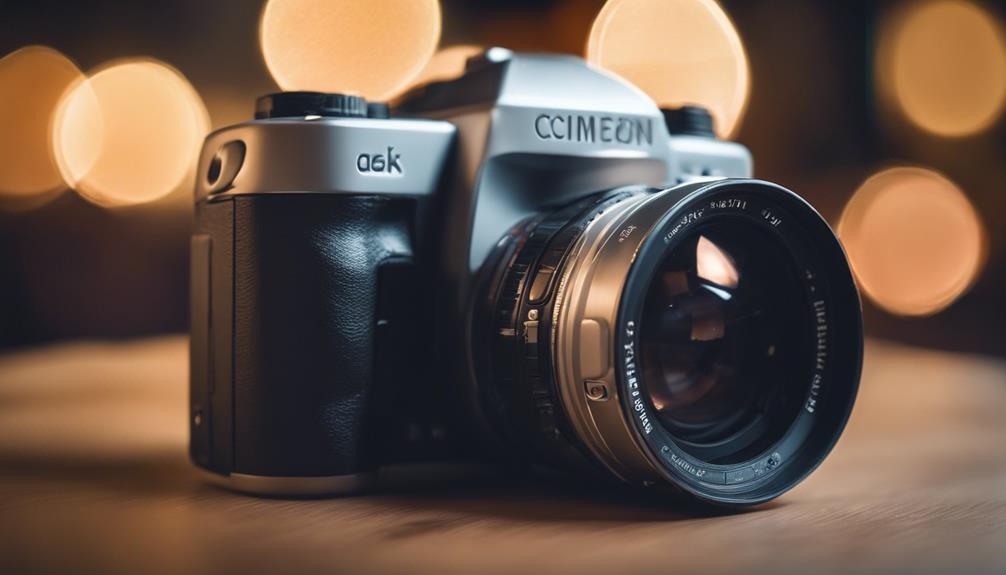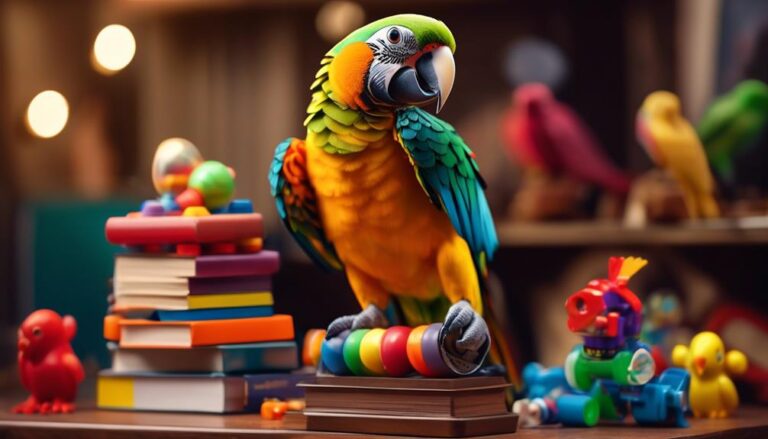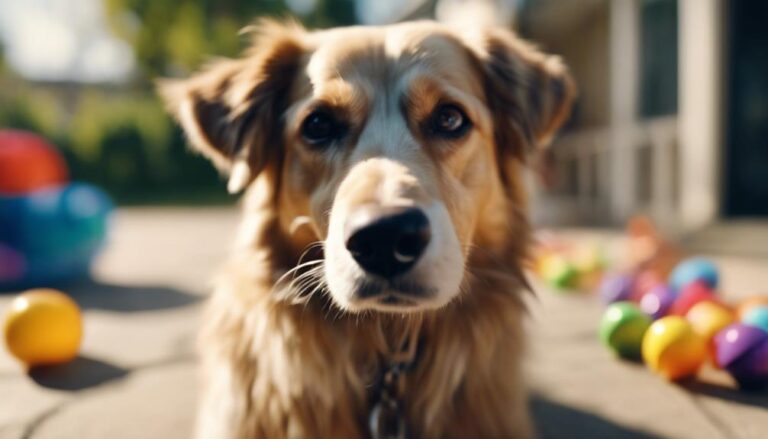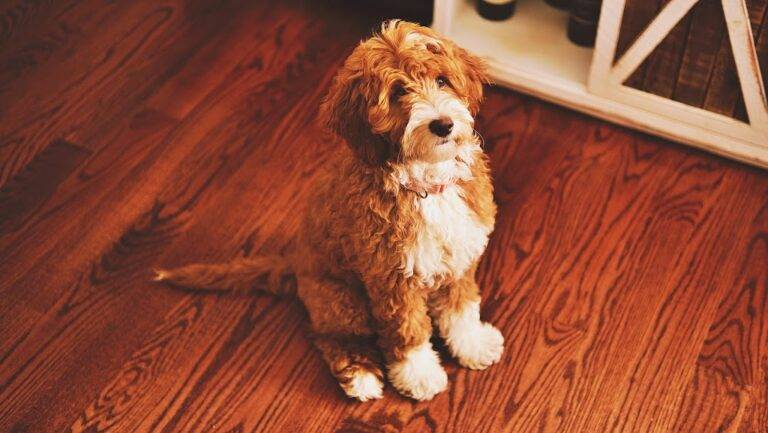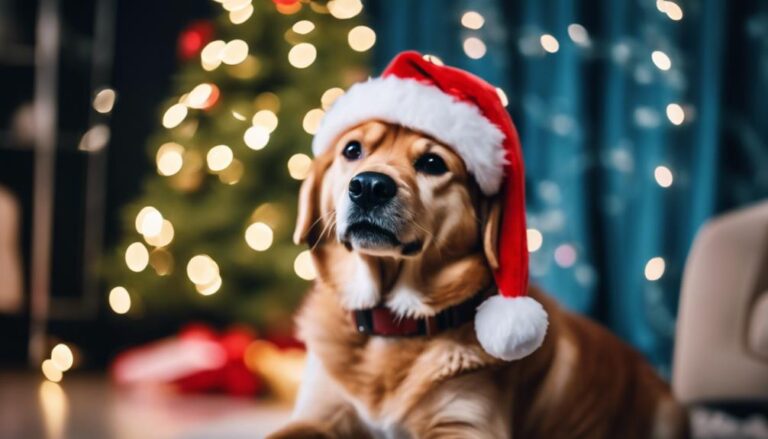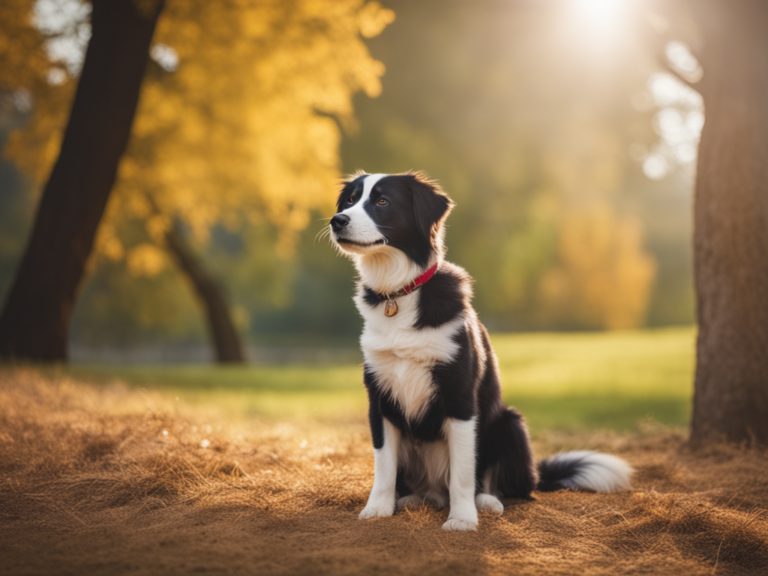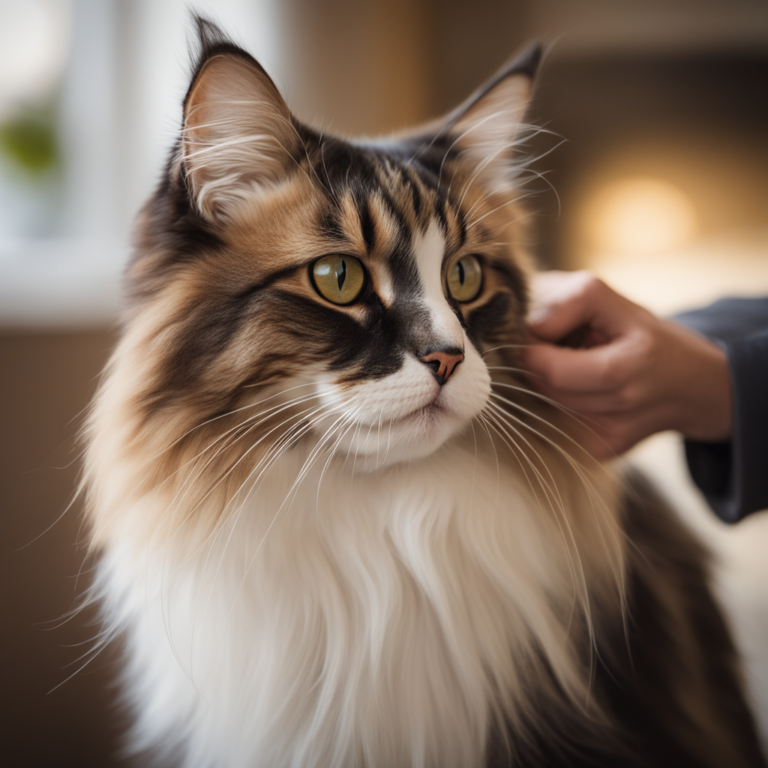Master your pet photography with these camera settings tips: Adjust aperture for background blur, use faster shutter speeds to freeze motion, optimize ISO for lighting, and choose white balance for accurate colors. Focus on the pet's eyes for emotion, consider wide aperture for focal clarity, and adjust exposure compensation for proper lighting. Try continuous shooting mode for capturing every movement and customize picture styles for visual appeal. Transform your pet photos from ordinary to extraordinary by mastering these essential settings! More insights await to elevate your pet photography skills.
Understanding Aperture
When capturing pet photos, adjusting the aperture settings on your camera allows you to control the depth of field in your images. Depth control is important in pet photography as it helps you emphasize your furry friend while creating a beautiful background blur. To achieve this, consider using a wide aperture (small f-stop number like f/2.8 or f/4) to isolate your pet from the background. This technique not only draws attention to your pet but also creates stunning bokeh effects, where the out-of-focus areas appear creamy and aesthetically pleasing.
Experimenting with different aperture settings can add creativity to your pet photos. For example, if you want to capture a portrait where both your pet and the background are in focus, opt for a narrower aperture (higher f-stop number like f/8 or f/11). This is ideal for shots where you want to showcase your pet in their surroundings, like at the park or in your home. However, be mindful that using a smaller aperture reduces the amount of light entering your camera, so you may need to adjust your other settings accordingly to maintain a well-exposed image.
Mastering Shutter Speed
To capture your pet's playful antics effectively, mastering shutter speed is essential. Adjusting this setting allows you to freeze motion and showcase your furry friend's energy and personality in each shot. With the right shutter speed, you can create dynamic images that bring out the best in your pet's movements.
Freeze Motion Effectively
Achieve sharp and detailed pet photos by mastering your camera's shutter speed for effectively freezing motion. When capturing pet portraits, motion blur can detract from the overall image quality. To avoid this, use faster shutter speeds for sharper results. Action shots are a common part of pet photography techniques, and to guarantee clarity in these moments, a fast shutter speed is essential. Start by setting your camera to a high shutter speed, around 1/500 or faster, to freeze your pet's movement. Experiment with different speeds to find the best setting for the specific action you are capturing. By understanding how shutter speed impacts motion blur, you can enhance the quality of your pet photography.
Capture Pet Action
Mastering shutter speed is vital for capturing dynamic pet action shots with clarity and precision. When photographing pet action, a fast shutter speed is essential to freeze motion and avoid unwanted motion blur. To achieve sharp action shots, set your camera to a high shutter speed such as 1/500 or faster. This setting will help you freeze your pet's movements and capture them in sharp detail. Timing shots correctly is also key; anticipate your pet's movements and be ready to press the shutter button at the right moment. By mastering shutter speed and timing your shots effectively, you can capture your pet's energy and playfulness in stunning action photographs, free from motion blur.
Optimizing ISO Settings
When shooting pet photography, understanding ISO fundamentals is essential for capturing clear and detailed images. You'll need to find the best ISO setting to balance light sensitivity and image quality for different shooting conditions. Implementing noise reduction techniques can help minimize graininess in your pet photos, resulting in professional-looking shots.
ISO Basics Explained
Are you curious about how to optimize your ISO settings for better pet photography results? Understanding ISO basics is important. ISO measures your camera sensor's sensitivity to light. In low light situations, you might need to increase the ISO to capture well-exposed images. This adjustment allows your camera to be more responsive to light, making it ideal for shooting in dimly lit environments. However, keep in mind that higher sensitivity (ISO) can introduce noise or grain in your photos. Finding the right balance between low light conditions and high sensitivity is key to achieving sharp and clear pet photographs. Experiment with different ISO settings to determine the best balance for capturing stunning pet portraits.
Finding Optimal ISO
To maximize your pet photography, it's crucial to determine the best ISO setting that balances light sensitivity and image quality. In low light situations, consider increasing the ISO to make your camera more light-sensitive, but be cautious as higher ISO settings can introduce noise into your images. To reduce noise, you can explore noise reduction settings on your camera or use editing software post-capture. For creative effects or when shooting fast-moving pets in dim lighting conditions, experiment with higher ISO settings. Keep in mind that while higher ISO can help in such scenarios, it may also result in grainier photos. Finding the ideal ISO involves testing different settings to achieve the desired balance between brightness and image quality.
Noise Reduction Techniques
For clearer and more polished pet photography, consider incorporating noise reduction techniques to optimize your ISO settings. When shooting in low light conditions, such as indoor settings or during dusk, using a high ISO can introduce noise to your images. To combat this, try to keep your ISO as low as possible while still achieving proper exposure. If you find yourself needing to use a higher ISO due to low light, consider using noise reduction features available in many cameras. Additionally, when capturing pet photos in low light, utilizing a tripod for long exposure shots can help maintain image sharpness while keeping the ISO at a minimum. By implementing these noise reduction techniques, you can elevate the quality of your pet photography, even in challenging lighting situations.
Choosing the Right White Balance
Selecting the appropriate white balance setting on your camera is crucial for capturing natural and accurate colors in your pet photographs. When it comes to pet portrait tips, understanding color temperature adjustment can greatly enhance the quality of your images. Different light sources have varying color temperatures, affecting how colors appear in your photos. For instance, natural light choices such as early morning or late afternoon light can provide warm tones that complement your pet's fur, creating a beautiful and natural look. Learning these pet photography tricks can make a significant difference in the outcome of your pictures.
To guarantee your pet's fur looks true to life in your photos, it's important to adjust the white balance setting according to the lighting conditions. Most cameras offer preset white balance modes like daylight, cloudy, shade, and fluorescent, as well as the option to manually adjust the color temperature. Experimenting with these settings while considering the ambient light can help you achieve accurate color representation in your pet portraits.
Focusing Techniques for Pets
Using the proper focusing techniques can make a significant difference in capturing sharp and detailed pet photographs. When photographing pets, it's crucial to pay attention to their eyes to create compelling and engaging images. Here are some tips to help you master focusing techniques for pets:
- Pet Eye Focus: Set your camera to focus specifically on your pet's eyes. This method guarantees that the most crucial part of your pet portrait is sharp and in focus, adding depth and emotion to your photos.
- Tracking: If your pet is moving, consider using the tracking focus mode on your camera. This function allows the camera to follow your pet's movement, keeping them in focus as they play, run, or jump around.
- Pet Portrait, Bokeh Effect: To create striking pet portraits with a beautiful background blur known as the bokeh effect, use a wide aperture (low f-stop number). This approach helps isolate your pet from the background, making them the clear focal point of the image.
Handling Exposure Compensation
Adjust your camera's exposure compensation to ensure proper exposure when photographing pets in different lighting conditions. This feature allows you to manually adjust the exposure recommended by the camera, helping you capture well-exposed images even in challenging lighting situations. When your pet poses in bright sunlight or under dim indoor lighting, adjusting the exposure compensation can make a significant difference in the final result.
For pet poses that involve dark fur or bright white coats, using exposure compensation can prevent underexposure or overexposure, ensuring that the details in your furry friend's coat are accurately captured. Additionally, when experimenting with creative lighting techniques such as backlighting or silhouette shots, modifying the exposure compensation can help you achieve the desired effect without losing important details in the shadows or highlights.
Mastering exposure compensation will not only enhance the overall quality of your pet photography but also provide you with more control over the final look of your images. Practice adjusting the exposure compensation in different lighting conditions and with various pet poses to become more comfortable using this essential camera setting. Remember, proper exposure is key to creating compelling pet portraits that truly showcase your furry companion's unique personality.
Utilizing Continuous Shooting Mode
For capturing dynamic moments of your pet in action, consider activating the Continuous Shooting Mode on your camera. This feature enables you to take multiple shots in quick succession, increasing the likelihood of capturing that perfect action shot or adorable pet portrait.
- Capture Every Movement: Continuous Shooting Mode guarantees you don't miss a moment of your pet's playful antics or energetic movements. It helps freeze fast-paced actions, such as your pet running, jumping, or playing fetch.
- Increase Sharpness: With this mode, you can choose the sharpest image from a series of shots. This is particularly useful when trying to get a clear and focused pet portrait, where your furry friend may not sit still for long.
- Embrace Expression: Pets exhibit a wide range of expressions that can change in an instant. Using Continuous Shooting Mode enables you to capture various expressions in a single burst, helping you preserve those unique and fleeting moments.
Using Custom Picture Styles
Enhance the visual appeal of your pet photos by customizing picture styles to suit your pet's unique characteristics and personality. Custom picture styles allow you to adjust settings like contrast, saturation, and sharpness to create a tailored look for your furry friend. By using custom picture styles, you can bring out the best in your pet's features and highlight their individuality in each shot.
When customizing picture styles for pet photography, consider the creative editing possibilities. Experiment with different color tones to evoke different moods in your photos. For example, warmer tones can create a cozy and inviting feel, while cooler tones can give a more modern and sleek appearance. Play around with the settings until you find the perfect style that enhances your pet's essence.
In addition to creative editing, custom picture styles can also help you work with various lighting techniques. Adjusting the contrast settings can help you manage different lighting conditions, ensuring that your pet stands out even in challenging environments. By customizing picture styles according to the lighting situation, you can capture stunning images that showcase your pet in the best light possible. Remember to fine-tune your settings based on natural light, indoor lighting, or any other lighting scenarios you encounter during your pet photography sessions.
Frequently Asked Questions
How Can I Ensure My Pet Stays Still and Poses for the Camera During a Photo Shoot?
To guarantee your pet remains still and poses for the camera during a photo shoot, try integrating pet training to teach them basic commands. Use treat rewards to motivate good behavior. Experiment with different camera angles and lighting techniques for engaging shots.
Are There Any Specific Camera Accessories That Can Help Improve Pet Photography?
To enhance your pet photography, consider lighting techniques like natural light or softbox for a flattering glow. Composition tips such as rule of thirds or leading lines can also elevate your shots. Accessories like remote triggers can aid in capturing candid moments.
Can You Provide Tips for Capturing Action Shots of Pets in Motion?
To capture action shots of pets in motion, focus on pet training for obedience. Adjust shutter speed for fast movements and use focus tracking to keep them sharp. With practice, you'll master action pet photography.
What Are the Best Settings for Capturing Photos of Pets in Low Light Conditions?
In low light conditions, adjust your camera settings for pet photography. Use wider apertures, slower shutter speeds for more light. Consider lighting techniques and editing software for enhancing your shots. Experiment to find the best balance.
How Can I Prevent Red-Eye in Pet Photos Taken With a Flash?
To prevent red-eye in pet photos with flash, try using red eye reduction setting. Pets may blink due to bright light, affecting portraits. Be patient, wait for a calm moment to capture adorable, blink-free shots.
Conclusion
Now that you've mastered the camera settings for pet photography, you're ready to capture stunning shots of your furry friends. Remember to play around with different settings to find what works best for each unique situation. Keep practicing and experimenting with your camera to continue improving your pet photography skills. With the right settings and techniques, you'll be able to create beautiful and memorable images of your beloved pets. Happy shooting!

